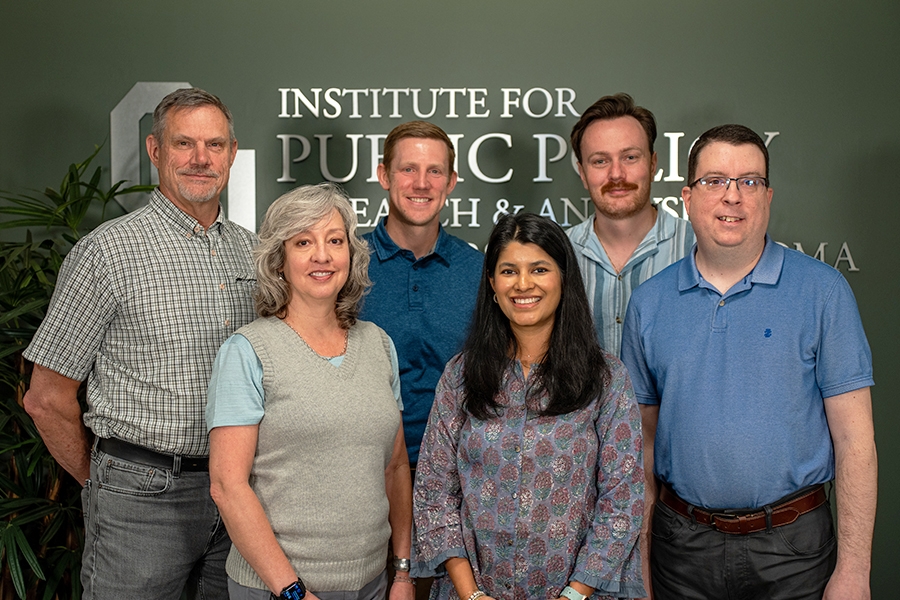
NORMAN, OKLA. – Research led by Hank Jenkins-Smith, Ph.D., director of the Institute for Public Policy Research and Analysis at the University of Oklahoma, explores American adults’ perceptions of fusion energy. This first-of-its-kind study reveals broad public support from respondents, but their limited knowledge of the technology and frequent misconceptions could pose a challenge to those seeking to develop fusion energy in the U.S.
“Our research questions public perceptions of nuclear fission and whether these opinions could affect the potential for fusion energy to become a major power source for the U.S. electrical grid,” he said. “It turns out that these social perspectives are significant and must be addressed by engineers, physicists and regulatory specialists for this technology to be widely adopted.”
Fission energy, or the splitting of atoms, differs from fusion energy, which combines two atoms under extreme heat and pressure. According to the International Atomic Energy Agency, the fusion process is intrinsically safe. It offers an abundant source of energy with very little greenhouse gas emissions or long-living radioactive waste. The same cannot be said for fission energy.
“We discovered that less than half of all respondents had heard of fusion energy, and many confused fission and fusion,” he said. “This confusion, along with pop cultural references of Godzilla or Homer Simpson and memories of spectacular accidents, like those at Three Mile Island, Chernobyl or Fukushima, cause them to believe that fusion technology is extraordinarily risky.”
Based on their research findings, Jenkins-Smith’s team determined that the public wants decision-makers to think carefully about the safety constraints and future incentives for fusion energy in America.
“The fusion industry should look at how the fission industry has developed an amazing safety culture. They’ve built in many layers and processes to reduce the possibility of accidents,” he said. “These are things that fusion regulators must develop ahead of time rather than waiting for a disaster to strike and fixing the problem later.”
According to Jenkins-Smith, messaging is an important takeaway from this research. He believes there are potential opportunities for misleading statements, leveraged by fusion opponents, to confuse and scare Americans and to undermine public trust for information from technology supporters.
“Because the public is not well-informed, opponents could fairly easily generate false narratives linking fission to fusion and thereby poisoning public acceptance of fusion moving forward,” he said. “To combat this, developers, regulators and advocacy groups must be aware of and careful about what they say about fusion energy. They must have humility and avoid making overly optimistic claims that will be difficult or impossible to achieve. Doing so will go a long way in retaining societal acceptance of this technology.”
Study respondents currently express high trust for regulators and operators of prospective fusion energy facilities. These positive views of fusion are based, in part, on technological optimism.
“Americans have a propensity to believe that new technologies can help improve their lives. We’re technological optimists,” he said. "The more technologically optimistic someone is, the more likely they are to support fusion energy. Harnessing this optimism could help grow our economy, tackle climate change and address international security and energy concerns.”
The researchers at OU’s Institute for Public Policy Research and Analysis study many wicked challenges society faces. Learn more about their energy and the environment research and read the full study, “Americans’ Views of Fusion Energy: Implications for Sustainable Public Support,” published in Fusion Science and Technology, DOI no. 10.1080/15361055.2024.2328457.
About the project
This research was a collaboration between Jenkins-Smith and IPPRA Associate Director for Energy and Nuclear Projects Kuhika Gupta, Ph.D., IPPRA Deputy Director for Research Joseph Ripberger, Ph.D., OU Senior Associate Vice President for Research and Partnerships Carol Silva, Ph.D., research scientist Andrew Fox, Ph.D., and graduate research assistant Will Livingston. Jenkins-Smith is also a George Lynn Cross Professor of political science in the OU Dodge Family College of Arts and Sciences. Photo courtesy Sean Ernst, Ph.D.
About the University of Oklahoma
Founded in 1890, the University of Oklahoma is a public research university located in Norman, Oklahoma. As the state’s flagship university, OU serves the educational, cultural, economic and health care needs of the state, region and nation. OU was named the state’s highest-ranking university in U.S. News & World Report’s most recent Best Colleges list. For more information about the university, visit ou.edu.
The University of Oklahoma professor Christina Giacona is making her fourth trip to the Grammy Awards next month, as four albums she worked on have received nominations from the Recording Academy.
In a rare achievement for an undergraduate student, Colby Higdon, a geology major on the paleontology track with the University of Oklahoma has published original paleontological research conducted at the Sam Noble Oklahoma Museum of Natural History that reveals new insights into whether competition between ancient animals was responsible for their extinction.
Newly published research in Science Advances, led by Jessica Cerezo-Román, at the University of Oklahoma, documents the oldest known cremation in Africa and provides some of the earliest evidence for intentional cremation using a pyre in the world.